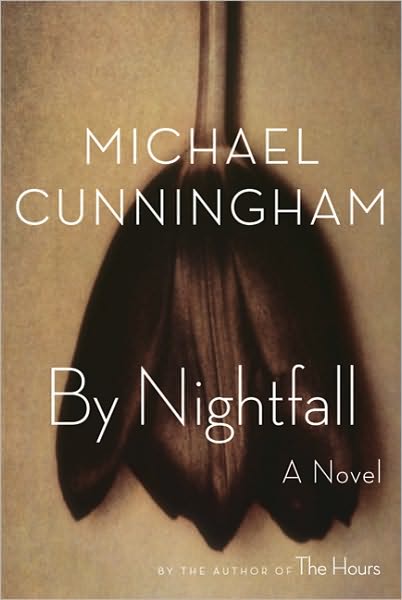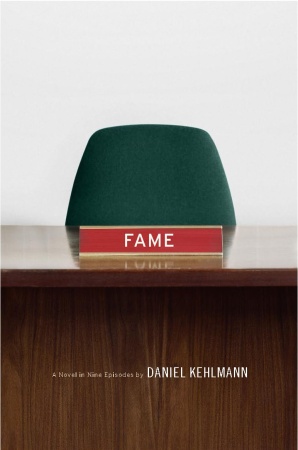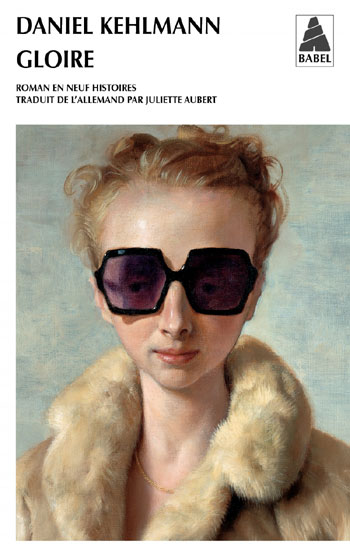.
.
The play of emotions and themes with which Michael Cunningham is most adroit — love, loss, desire, despair, mortality — are again engaged in his new novel set in present day Manhattan. But take note: To launch the reader into the world of “By Nightfall” Cunningham has chosen for the book’s epigraph a line from Rilke’s Duino Elegies: “Beauty is nothing but the beginning of terror.” In full text, Rilke’s message is even more chilling: “For beauty is nothing but the beginning of terror which we are barely able to endure, and it amazes us so, because it serenely disdains to annihilate us. Every angel is terrifying.” This, Cunningham signals, will be his novel’s all-encompassing theme: the pursuit, use, and misuse of beauty.
Now, this is not the stuff to entice a broad readership. Many previously attracted by the cross-over appeal of Cunningham’s break-through novel, “The Hours,” will be disappointed to discover that “By Nightfall” is not a comparably rewarding experience. This is, to be frank, a novel for a few. But still it is a very good novel that I hope will find its audience.
The principal characters in “By Nightfall” are Peter Harris, a 44-year-old contemporary art dealer, and his wife Rebecca, an editor of an arts and culture magazine. The plot, modestly scaled, is set in motion by the appearance of Rebecca’s much younger brother Ethan (age 23), a beautiful, flawed and directionless young man interested in doing “Something in the Arts.” Ethan’s short stay in the couple’s spacious SoHo loft will upend all three lives.
A Slave to Beauty
Here is how Peter remembers his first immersion in beauty, an epiphany he experienced as a teenager at a summer lake as he watched the swim-suited girlfriend of his older brother enter the water:
“It’s not lust, not precisely lust, though it has lust in it. It’s a pure, thrilling, and slightly terrifying apprehension of what he will later call beauty, though the word is insufficient. It’s a tingling sense of divine presence, of the unspeakable perfection of everything that exists now and will exist in the future.”
As a art gallery owner, Peter’s occupation is that of a “servant of beauty.” His role is to judge who among artists is worthy of exceptional recognition and to enable those persons to flourish. In this endeavor he is suffering a crisis of confidence, seeing himself as a mere “winner of various second prizes,” a person unlikely to rise to the level of taste-maker enjoyed by owners of “first rank” galleries. He exhibits a post-9/11 existential dread: “[a] conviction, in the face of all evidence to the contrary, that some terrible, blinding beauty is about to descend and, like the wrath of God, suck [the world] all away, orphan us, deliver us, leave us wondering how exactly we’re going to start it all over again.”
The Book’s Weaknesses
“By Nightfall” is written in a combination of “voices”: at times there is a third person omniscient narrator, sometimes a second person interlocutor, but principally we are caught within Peter’s own ruminations. The lasting effect is a story told through Peter’s eyes. While this brings a unity to the novel, it also can be a handicap. When events, ideas and emotions come to us filtered through Peter’s fears and exquisite sensibilities, the narrative sometimes falls into a rut, trapped by the insular sound of Peter conducting a hothouse conversation with himself. The reader yearns for more self-sufficiency on the part of other characters — persons we are meant to, and want to, care about. Happily, Cunningham is terrific with dialog, and the frequent conversational segments — animated, stylish, and verbally agile (these are New Yorkers, after all) — oxygenate the narrative.
One of the reasons “By Nightfall” suffers in a direct comparison with “The Hours” is that the earlier novel gained strength by its focus on the lives of three women (although their lives, too, were mostly “interior” lives). In following one flawed male exclusively, the new novel is hampered with what I think is weaker stuff. Consider the following sentiment from the mind of Peter, a view, I suspect, shared by the author:
“We — we men — are the frightened ones, the blundering and nervous ones; if we act the skeptic or the bully sometimes it’s because we suspect we’re wrong in some deep incalculable way that women are not. Our impersonations are failing us and our vices and habits are ludicrous and when we present ourselves at the gates of heaven the enormous black woman who guards them will laugh at us not only because we aren’t innocent but because we have no idea about anything that actually matters.”
Notwithstanding the insight and humor of the author (as evident in the above quotation), the fact is that by situating his exploration of the mysteries of beauty and desire in a precious, privileged environment, Cunningham risks the ire of those same readers now loudly railing against the educated, liberal, upper-middle-class insularity of Jonathan Franzen’s “Freedom” (another study of an unstable love triangle set in the present day). They scream: “Who cares about characters who are not like me?”
The Book’s Strengths
And yet to dismiss the book’s atmosphere as claustrophobic or its world view as irrelevant is, I think, a fraudulent stance. Yes, the setting and tone is a highly literary one. That’s what you expect from Michael Cunningham. He writes principally for other voracious, educated readers. Yes, it helps to recognize Cunningham’s allusions to a high culture sources — Joyce’s “Ulysses” and his short story, “The Dead”; Fitzgerald’s “The Great Gatsby”; Mann’s “Death in Venice”; and the real-life doomed affair of Rimbaud and Verlaine. But what is also remarkable is the broad range of topics Cunningham manages to cover in what is one of his shortest novels.
Among those elements is an insider’s look at the cutthroat and compromised world of contemporary art. And let’s give thanks, that, unlike so many other authors who populate their novels with fictional novelists, Cunningham is willing to explore the paths of creativity through non-writer characters. Aside from references to actual artists (Brueghel, Rodin, Damien Hirst), Cunningham convincingly creates a bevy of working artists, devising for each an interesting aesthetic and conjuring up a room full of their works for exhibition. Also of interest is the well described minutiae and daily grind of office life in what is, essentially, just another small business operation. Cunningham has fun with the fact that an art gallery must engage in the soul-sapping compromise of stocking what will sell.
As in previous novels, Cunningham is quite skillful at getting us to feel the connections within families that endure even long after childhood (Peter and Rebecca’s family histories are examined in flaskbacks). He is best with younger characters, especially sibling relationships that take on a love/hate dynamic, and he well captures the pangs of growth beyond adolescence. Fears of growing old and dying are also featured prominently in the new novel and are sensitively evoked.
Of course no one can gainsay the beauty of Cunningham’s writing (filled with perfect details), his intelligence, his empathy. Other reviewers will doubtless cite their own favorite passages, but for me one that stands out is a terrific set piece in the middle of “By Nightfall” which tracks the steps of an insomniac Peter who, in the wee hours of the night, leaves his loft for a meandering nocturnal walk through the irregular streets of lower Manhattan — it is an unexpected, charmed sequence.
Rilke, Flaubert, Cunningham
To return, then, to the Rilke epigraph that presages the theme of “By Nightfall,” how is it, one asks, that “beauty disdains to annihilate us”? I think the answer is found in Cunningham’s obvious devotion to Flaubert. He shares with the French author a despairing sense of the ultimate inadequacy of language. In the final pages of “By Nightfall” Cunningham quotes not once, not twice, but three times from the following lament expressed in “Madame Bovary” (here in Gerald Hopkins’ translation):
“After all, no one can ever give the exact measure of his needs, of his thoughts or his sorrows. Human language is like a cracked kettle on which we beat out tunes for bears to dance to, when all the time we are longing to move the stars to pity.”
Here is another translation of that passage, more beautiful and less faithful to the original, by Francis Steegmuller:
“For none of us can ever express the exact measure of his needs or his thoughts or his sorrows; and human speech is like a cracked kettle on which we tap crude rhythms for bears to dance to, while we long to make music that will melt the stars.”
Coming late, but coming, to self-knowledge
Peter’s dilemma is the common fate of men: “What do you do when you’re no longer the hero of your own story?” In Peter there’s more than a little of T.S. Eliot’s aging Prufrock (“No! I am not Prince Hamlet nor was meant to be; Am an attendant lord . . . glad to be of use, politic, cautious and meticulous, full of high sentence”). Peter expresses his fate as a resignation to “live on as a solid second-stringer, respected but not feared [and settled into] a career of semi-defeat, a champion of the overlooked and the almost-but-not-quite.”
A re-balancing is in order. Peter, who’s life is the world of art — the representation of a thing or emotion or idea — comes to realize the falsity of his pursuit. At the close of the book he understands it is, rather, “flesh, the true and living thing, [that] trumps every effort at representation.” Confessing his mistakes and transgressions to his wife (a confession that will continue beyond the final page of the book), he sees he has “failed in the most base and human of ways” — for he has “not imagined the lives of others.” Cunningham’s prescription, his choice as a bulwark against annihilation, is this:
“To love, to forgive, to abide.”
_ _ _ _ _ _ _
A condensed version of this review is posted on Amazon, here.
.


